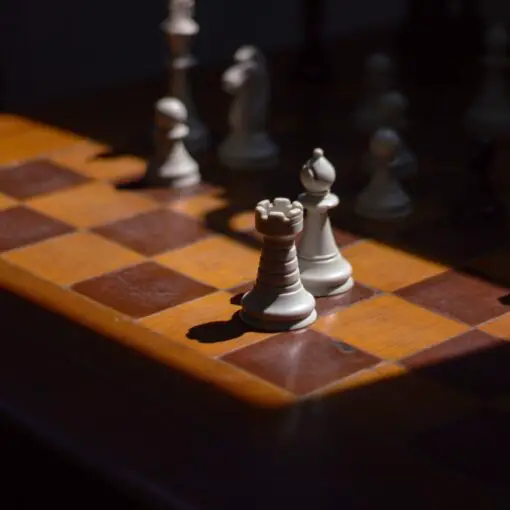Lateral thinking is a form of creative reasoning that allows people to approach a problem and formulate innovative solutions. This form of thinking defies the tried and tested and attempts to shake off the rigid mold of traditional linear thinking. You may harness this process of creative lateral thinking to make yourself more open to new ideas and inspiration.
Lateral thinking is a creative form of problem-solving that explores multiple alternatives and perspectives to explore a given problem. This system of thought challenges assumptions and rigid mindset to “think outside the box” and question and explore various alternatives.
Lateral thinking can be a valuable tool in your career and everyday life by exploring your world more critically without being closed-minded. By embracing the less than obvious and incorporating the random in your thinking, lateral thinking can help you approach problems more creatively. Here are some ways that lateral thinking strategies can help you find a new way to problem solve.
Lateral Thinking Tips to problem Solve
Edward De Bono first coined the phrase lateral thinking in his 1967 book The Use of Lateral Thinking. The concept refers to a form of creative reasoning that incorporates non-linear logic to problem solve and create new ideas.
Unlike critical reasoning, which moves from known ideas in a linear fashion, lateral thinking uses known ideas to move laterally into new, often unexpected associations.
This form of creative reasoning explores unlikely paths of thought to break free from established patterns and labels to gain fresh insight into an idea or problem. De Bono suggests several ways to apply lateral thinking in your career and life in general, which are as follows.
Identify Self Limiting Beliefs
Often we are held back from finding solutions to problems by our belief system, which is like the filter of a camera through which we view our lives. Much of the time, our assumptions about what is true and how we see the world is embedded in our existing belief structures.
We become so used to looking at problems in a certain way that we often don’t see the best solution. To use lateral thinking, one must constantly be aware of our constraining preconceptions and question the assumptions that limit ourselves.
Be Willing to Ask Questions
Part of the challenge to address your limiting assumptions is to ask questions constantly. Not merely in an external sense to question other people but also to question what you read, see or hear.
Part of lateral thinking is training your brain to question information as you process it, heightening your awareness and promoting creative thought. Being curious about your world and experiences increases your mind’s ability to think outside traditional lines.
Uses Puzzles to Spark Lateral Thought Processes
Lateral thinking puzzles are an excellent way to hone your lateral thinking skills in a fun (and sometimes frustrating) manner. Lateral thinking puzzles are often called situational puzzles because they take the form of a short description of a scenario that one must find the explanation to fit.
For example:
A man walks into a pub and asks the bartender for a glass of water. The barman takes out a revolver and points it at the man. The man says ‘”thank you and leaves.
Generally played in a group, you may ask the holder of the answer yes or no questions till you find a scenario that best explains the strange scenario. Often there are multiple solutions, but only one solution best explains the puzzle.
There are plenty of lateral thinking puzzles online for you to explore in a group or even on your own such as 50 great puzzles on Parade. Learning to approach a problem from multiple angles is an essential part of using this style of thought in problem-solving.
*The answer to the example puzzle is at the end of the article.
Learn to Seek Multiple Alternatives to a Problem
Often people opt for the most logical solution to a particular problem without seeking even more viable and creative solutions. De Bono urges his readers to set aside ‘suitable’ solutions to a problem to consider alternative approaches, even the most unlikely ones.
Choosing alternatives to a straightforward solution lets you view the original problem from multiple angles. Alternatives also allow you to use ready-made concepts as a jump-off point to create new and innovative ideas and solutions.
Make Use of the Random to Stimulate Innovative Solutions
When we focus on a problem, we tend to narrow our focus and may block out potential stimuli that can help us find better solutions. Most of the world’s breakthroughs in every field have been a happy coincidence of deep thought and random occurrence. Consider the famous falling apple that triggered Newton’s theory of gravity.
De Bono encourages his readers to choose a random object or a random noun in a dictionary and find the associations to their current problem.
Unexpected associations can stimulate the brain to explore and link concepts in new and novel ways. Lateral thinking can open new creative solutions if you allow the random and external stimuli to enter your linear thought processes.
Take on a Different Perspective
An essential part of lateral thinking involves shifting your base of perception to view a problem from a different angle. When brainstorming a solution to a particular problem, sometimes it can help to assume another person’s perspective. For example, from a historical figure or someone who embraces the qualities you admire.
You may also approach the problem from the point of view of other fields of reference such as scientist, a magician, or a lawyer. By pacing yourself in ‘someone else’s shoes,’ you may find yourself with new insight as it helps you to step out of your own linear processes when exploring a problem.
Closing Thoughts
Lateral thinking can help you break down your self-imposed barriers to creative thought and help you see solutions that you overlooked before. The trick is to keep curious about your world and practice “sideways’’ thinking when presented with a challenging problem. And don’t forget to look out for those “falling apple’’ moments!
*Solution to the lateral thing puzzle:
The bartender heard the man hiccuping and decided to help him by giving him a fright, which is why the man thanked him.





